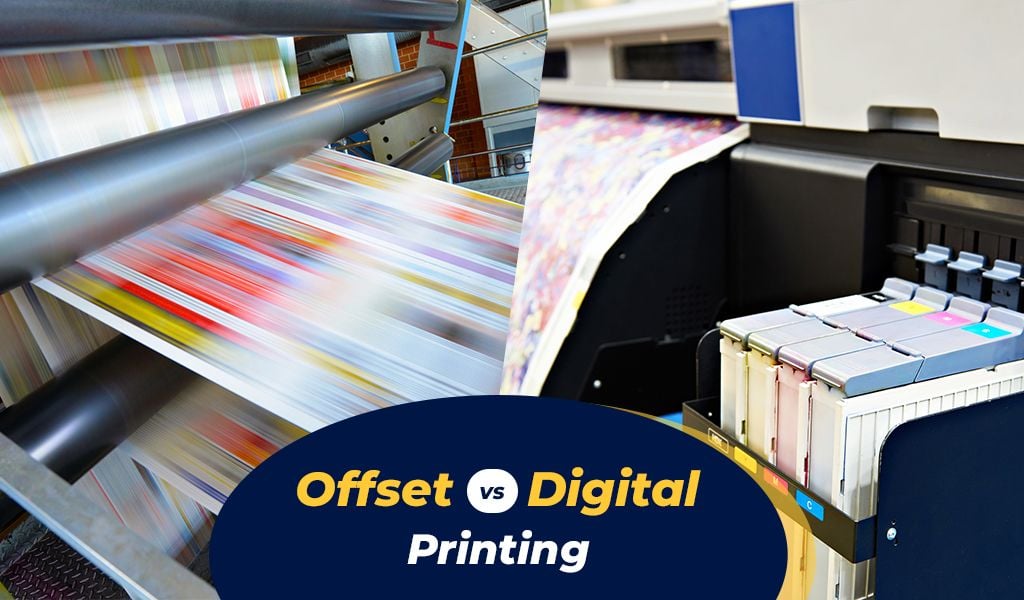5 Tips to Decide Between Offset and Digital Printing
)
The 4 differences between offset and digital printing
Each printing technique used by printing businesses like Snap is different. When it comes to offset and digital printing, the two printing techniques can be unique in a few ways including:
The types of ink used
The printing mechanism
The cost of printing
The time it takes to print quantities
When choosing printing methods for your task, there’s a lot to consider. Read some more tips in What is High-End Printing and What is Large Format Printing. Or take a look at our Snap Blog Ideas and Thoughts.
How does offset printing work?
Offset printing is different from digital printing as it doesn’t transfer ink directly to paper. Instead, it first transfers it to a rubber cylinder, which then applies it to the desired location– this is known as a three-step offset technique.
While it adds an additional step to the printing process, it makes it easier, cheaper and faster to mass-print things like labels, stickers, and flyers.
It’s because of techniques like offset printing that Snap customers get cheaper options when choosing to bulk-print their products.
How digital printing works
In comparison, digital printing works by printing an image directly onto the desired location (usually paper).
There are fewer stages to digital printing than offset printing because it doesn’t require a printing plate. Because of that, digital printing is cheaper and faster for smaller printing jobs.
Digital printing results are crisp and vibrant, and the turnaround is usually pretty fast. Contact a centre near you to organise your printing times and to get a quote.
When to choose offset printing and when to choose digital printing
What are the advantages of offset printing
Typically, offset printing is better for large-scale printing services than digital.
The higher the number of units, the higher the benefit
It can easily be printed on a wide variety of paper types, labels, and stickers
Different finishes and textures are available
High printing quality and clarity
Cost-effective for large printing jobs (usually 500 pages or copies and above)
What are the advantages of digital printing
Most commonly, digital printing is better suited to small-scale printing services.
Easy to change colours and customise
Cheaper to start your printing job as there are fewer requirements
Easier to change information or images printed
More environmentally friendly than some alternatives
Fastest printing turnaround time
Cost-effective for smaller printing jobs (one to 500 pages or so)
Sizes 360 x 660 and weights from 80gsm to 400gsm
How to choose between offset and digital printing
Typically, commercial printing jobs choose offset printing services. And oppositely, small local businesses and one-off printing jobs would use digital printing services.
Offset is usually most suitable for large-scale (500 or more) printing services like:
Newspapers
Flyers
Books
Custom stationery labels
Digital printing is usually best suited for smaller-scale (1-500) printing services like:
Business cards and postcards
Greeting cards, invitations, and envelopes
Newsletters and letterheads
Menus
Is offset or digital printing cheaper for your printing job?
Every printing job is different. To figure out which type of printing service is right for you, request a quote for your digital or offset printing job or find a centre locally near you to contact.
Snap has local printing service centres across New Zealand in North Harbour, Newton, Downtown, and East Tamaki. Find a centre near you to talk to a custom-printing specialist and to get thoughtful insight into your personal or commercial printing needs.
| Tags:General News |
&geometry(179x122))



